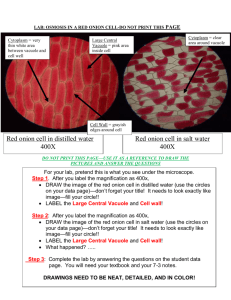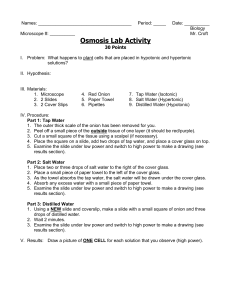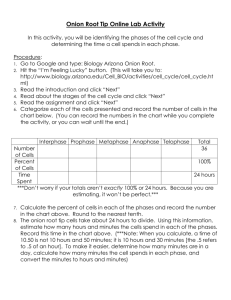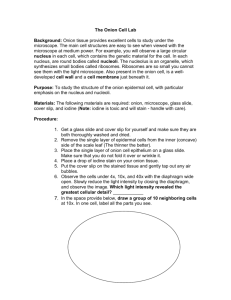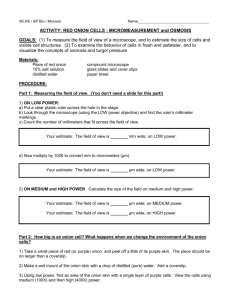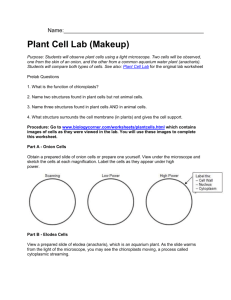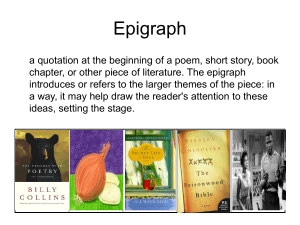Onion Osmosis Lab
advertisement
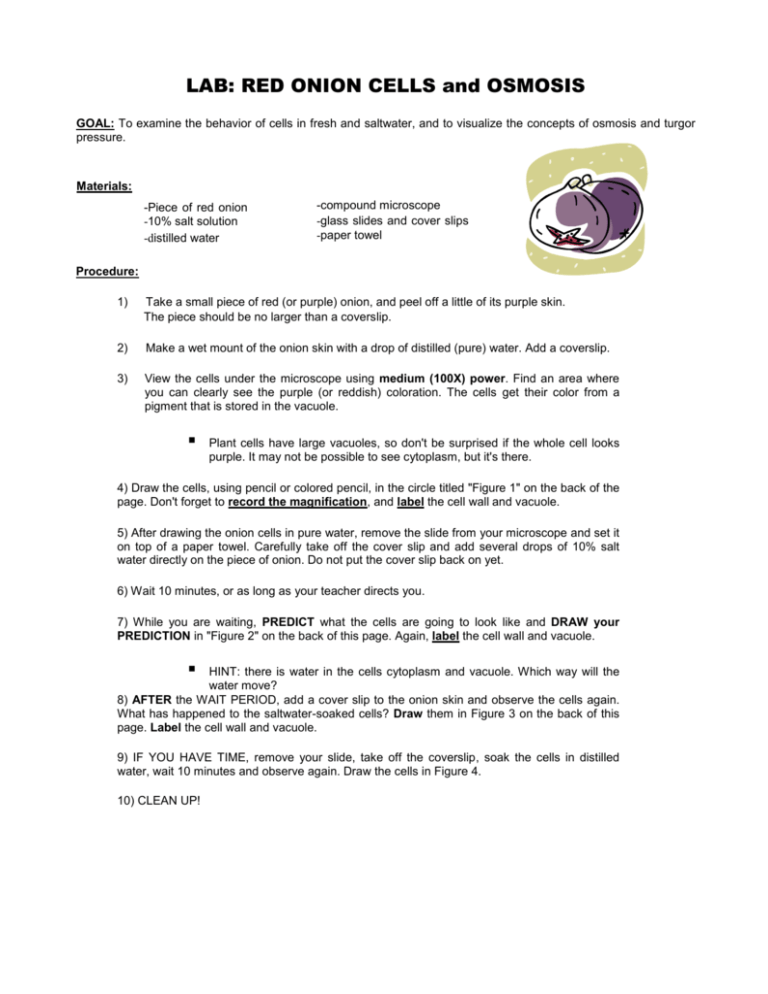
LAB: RED ONION CELLS and OSMOSIS GOAL: To examine the behavior of cells in fresh and saltwater, and to visualize the concepts of osmosis and turgor pressure. Materials: -Piece of red onion -10% salt solution -distilled water -compound microscope -glass slides and cover slips -paper towel Procedure: 1) Take a small piece of red (or purple) onion, and peel off a little of its purple skin. The piece should be no larger than a coverslip. 2) Make a wet mount of the onion skin with a drop of distilled (pure) water. Add a coverslip. 3) View the cells under the microscope using medium (100X) power. Find an area where you can clearly see the purple (or reddish) coloration. The cells get their color from a pigment that is stored in the vacuole. Plant cells have large vacuoles, so don't be surprised if the whole cell looks purple. It may not be possible to see cytoplasm, but it's there. 4) Draw the cells, using pencil or colored pencil, in the circle titled "Figure 1" on the back of the page. Don't forget to record the magnification, and label the cell wall and vacuole. 5) After drawing the onion cells in pure water, remove the slide from your microscope and set it on top of a paper towel. Carefully take off the cover slip and add several drops of 10% salt water directly on the piece of onion. Do not put the cover slip back on yet. 6) Wait 10 minutes, or as long as your teacher directs you. 7) While you are waiting, PREDICT what the cells are going to look like and DRAW your PREDICTION in "Figure 2" on the back of this page. Again, label the cell wall and vacuole. HINT: there is water in the cells cytoplasm and vacuole. Which way will the water move? 8) AFTER the WAIT PERIOD, add a cover slip to the onion skin and observe the cells again. What has happened to the saltwater-soaked cells? Draw them in Figure 3 on the back of this page. Label the cell wall and vacuole. 9) IF YOU HAVE TIME, remove your slide, take off the coverslip, soak the cells in distilled water, wait 10 minutes and observe again. Draw the cells in Figure 4. 10) CLEAN UP! Name: _____________________________ Date: ______________ Seat#: ________ Per: _____ LAB: OSMOSIS IN AN ONION CELL RESULTS Microscope Observations *Within the circles below, draw what you see. Make sure to give each figure: a number and title (ex: Figure 1: Red Onion Cell in Plain Water) magnification (40x, 100x, or 400x) label all visible cell parts *Use pencil or colored pencil. LABEL AS MUCH AS POSSIBLE! Prediction: What do you think will happen to the onion cells when you soak them in salt water? POST-LAB QUESTIONS (no formal write-up required) 1. What type of solution is the salt water? 2. What type of solution is the distilled water? 3. Which cell structure was expanding /shrinking in response to the different solutions? 4. When you soaked the onion cells in saltwater, what happened to them. Be specific in your explanation. 5. Which caused greater osmotic pressure (known as turgor pressure in plants) inside the cell, the distilled water solution or the saltwater solution? 6. If we watered whole onion plants growing in the field with salt water, how would the plants respond? Be specific in your explanation; you can use a drawing to help you with your explanation. 7. Water will flow from the _______________side of the membrane to the _______________ side of the membrane. 8. What type of passive transport is this lab illustrating? a. Does passive transport require energy?


